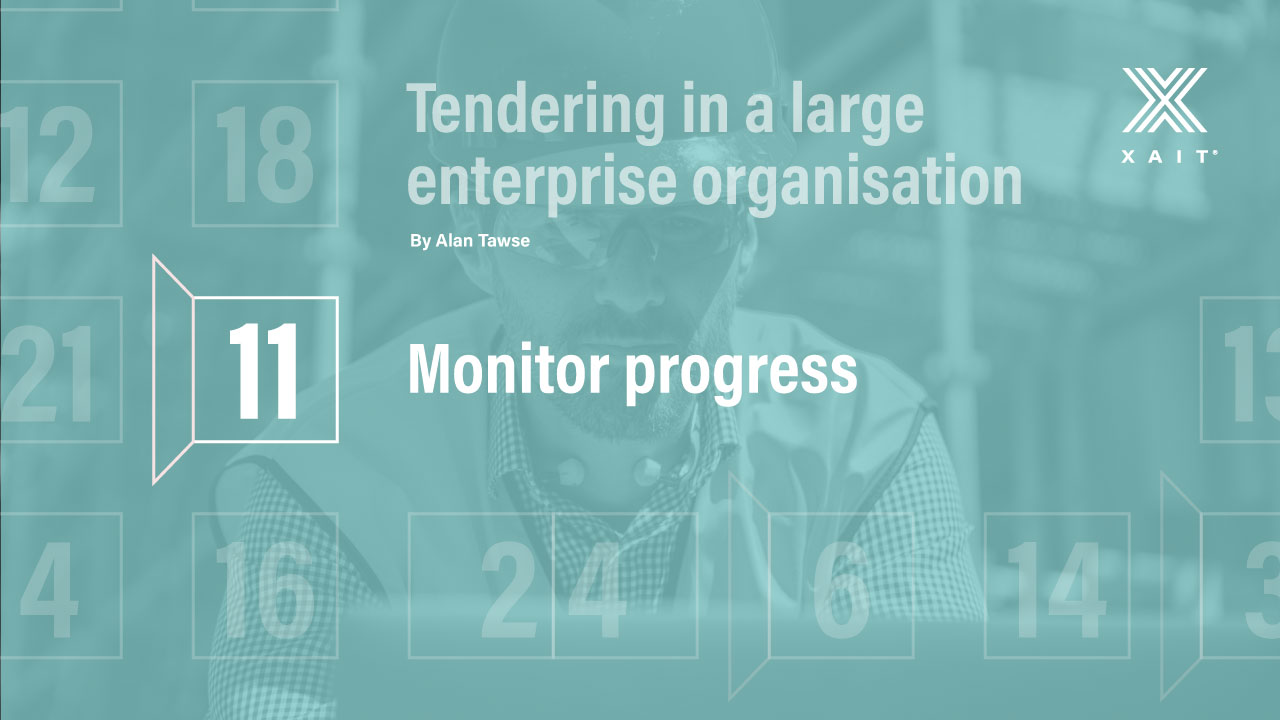Throughout the period that the tender response is being compiled, it is important to have visibility of the progress, to be able to mitigate any unexpected problems and keep to a schedule that will ensure on-time delivery. A common rule of thumb for tender work is that the time available should be divided into three phases.
- 25% – reading and planning the response
- 50% – compiling the response
- 25% – reviewing and refining the response
The actual percentages may be adjusted depending on the scope and complexity of the bid, but it is important to have a plan that provides a completed draft response with enough time left to review and improve any parts that would benefit from further attention. Using this methodology will support optimization of the quality of the response by ensuring that any individual inputs or suggestions can be incorporated at an earlier stage, and that there is still time left at the end for a fresh review of the overall response.
Regular review
The larger the tender response, the more important it is to have scheduled progress reviews with all participants, to identify any delays or bottlenecks, and develop mitigation plans if required to get back on track. This can be done either with all concerned or with separate reviews with different individuals or groups – whatever is the most effective.
It should also be encouraged for immediate reporting of any perceived delay or impediment, rather than waiting for the next scheduled review. This will allow more time for adjustments to be made to remedy the situation.
Working with deadlines
Most tender teams will allocate various deadlines across the tender for people to compile their responses, and for reviewing or approving the finished responses. This is usually based on when the tender response needs to be finished, ready for formatting or printing prior to delivery to the client.
That often leads contributors to work backwards from their assigned deadline, by looking at their delivery date, deciding how much time it will take, (and some may add in a safety margin) and then subtracting that from their deadline to establish a starting date. If so, that will likely leave a time gap at the beginning where they work on other things. This leads to a number of unwanted consequences.
- Wasted time where nothing is provided, meaning nothing to be reviewed or improved and no-one else knows what the writer is thinking of writing
- If the writer has some wrong ideas for parts of their response, there will be less time to correct and redirect their contribution
- Some other work tasks may arise and need to be addressed during the time they planned to work on their response
- An unplanned problem, perhaps technical or personal, may arise that affects their planned work
Work forwards, not backwards
Many people working on tender submissions underestimate the amount of work required by those responsible for compiling the tender response prior to submission. That is why it is important to respect deadlines and, where possible, aim for early completion to help others.
The recommended approach is to always encourage tender contributors to work forwards from now to complete their task, so that if it requires less time than the days available, the free time is placed at the end of their assignment when it may be used to improve their submission, or used for other work if it is completed. That means more of the tender submission is finished off earlier in the process and time and resources diverted to where they can be used more effectively, and avoids unpleasant surprises where the expected work is delayed or needs last minute re-working.
Continuous review and improvement
As the tender response begins to take shape, tender support staff can review the content and make any necessary adjustments for spelling, grammar, format and layout of pictures, tables, illustrations and attachments. Any relevant input or comments from involved persons can then be incorporated by the writers.
The more content that is reviewed during the writing phase, the less that remains to be done once the writing is finished. The aim is to avoid the final review and formatting becoming a bottleneck in the closing stages of the response compilation.









